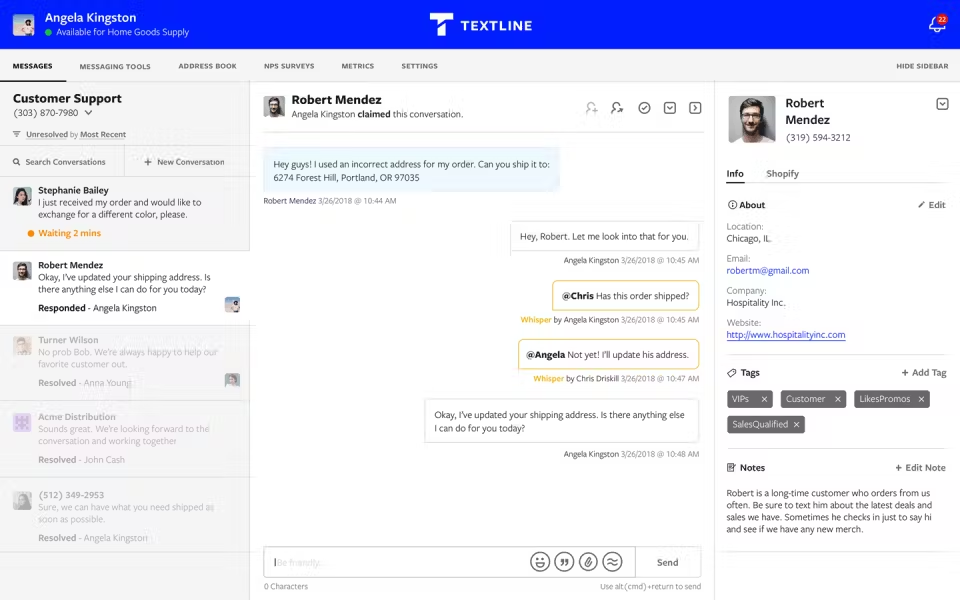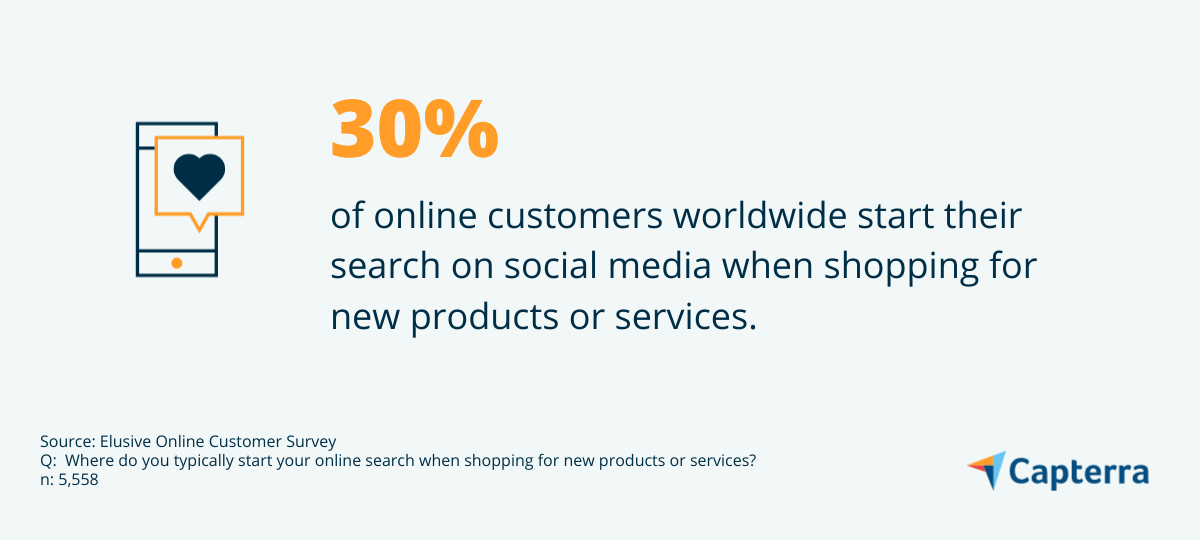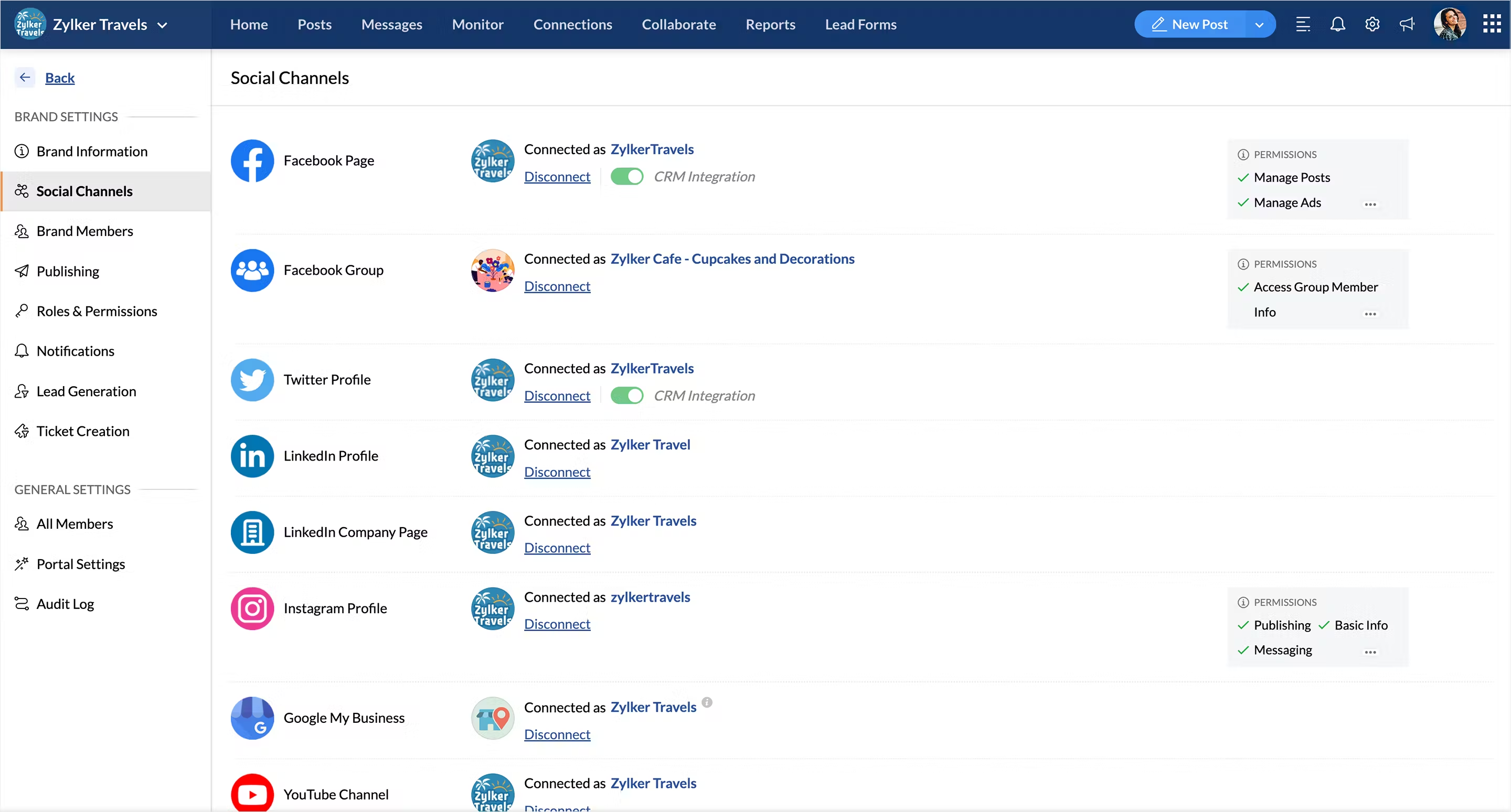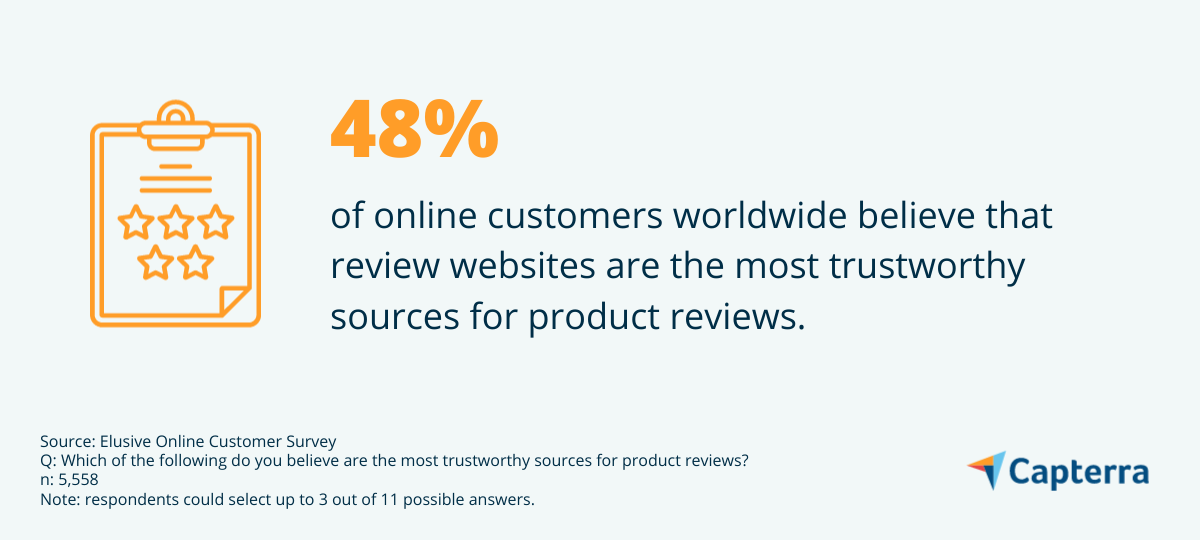3 tech-driven solutions retailers can use to upgrade their customer experience
Small businesses in need of more sales should focus on their online presence because that’s where the buyers are. In fact, a Capterra survey of 5,585 online shoppers worldwide found that more than half (63%) say they make web purchases at least once a week on average.*
When you’re competing with more established brands for those sales, there’s one element that can give you an edge: Customer experience (CX).
“Making customers' lives easier and better is the best marketing that you can't buy,” says CX futurist and bestselling author Blake Morgan.[1] “You only earn it by providing an incredible customer experience.”
We interviewed Morgan for a series of videos like the one below, and asked her to share what retailers should and shouldn’t do as they apply CX strategies and technologies to boost online sales.
1. Do invest in tech that solves problems, don't fall for "shiny objects” that can complicate CX
“Companies often have the ‘shiny object’ syndrome where they want new software just because everyone's talking about it,” says Morgan. “Instead, think carefully about the problem you’re trying to solve in the buyer journey, and ask yourself if a specific tool really adds value.”
Some of those tools may not add any value, given that 42% of online shoppers in Capterra’s survey said they aren’t interested in using many forms of emerging tech such as chatbots or artificial intelligence (AI)-driven chatbots.

So, what kind of CX software should businesses invest in instead? Morgan recommends investing in systems that let you capture customer data to understand what channels customers are coming from (e.g., a search engine, email marketing, social media), which products they’re most interested in, and how they want issues resolved.
“We have to get our technology stack in order before we can start upselling and cross-selling customers,” says Morgan. “The better our customer data, the more we can sell because we know what's happening with our customer: Where they are in the customer journey, what they need, and where they might be going.”
Customer service software systems are often versatile enough to gather these insights while helping customers with service requests. Some examples of these functions include:
Customer interaction analytics. By analyzing call recordings or transcripts of live chats, retailers can identify patterns in customer interactions, which enable businesses to proactively address their concerns to improve customer experience.
Customer journey mapping. By tracking customer touchpoints across various channels—whether through the website, social media, or email—retailers can analyze the complete customer journey to identify pain points and improve the CX.
Customer feedback and surveys. By sending out feedback forms and surveys after the interaction with customers, businesses can collect customer input on their experiences and preferences to improve their products and services.
Once companies have a good idea of improvements to be made, they can gradually start implementing them.
“It’s a game of inches rather than yards,” says Morgan. “The difference between winning and losing customers could be just a tiny amount of effort in the customer experience. But that tiny amount cumulatively over time can provide huge leaps and gains for the brand.”

Chat function in a customer service platform [Source]
Service agents can save time by using the chatbot function to help customers by resolving simple queries about operating hours, contact info, and status updates.
2. Do build meaningful connections on social media, don't just blast ads
“I believe traditional advertising is on the way out,” says Morgan. “Instead, retailers should focus on offering their customers content that is useful, on being of service, providing value, and enriching people's lives.”
The Capterra survey findings confirm that bombarding potential customers with advertising on social media might not always be the best way to convince them, as it can lead to ad fatigue. In the last year, 39% of online shoppers worldwide have blocked specific social ads, and 29% have blocked or unfollowed a brand.
At the same time, when used effectively, social media can play a crucial role in the customer experience, as many online shoppers begin their journey there. This is a great way to interact with your customers on a personal level—by responding to their messages and keeping them engaged.

So, how should retailers leverage social media to improve their customer experience? Here are a few ideas:
Using social media to listen to your customers. Social media channels are a great place to gather feedback from your followers. You can then use that data to improve your products and services. A social listening tool allows businesses to monitor and analyze public conversations about their brand across social media and online platforms.
Creating content that helps your customer in their journey. There are all kinds of questions customers might have before they decide to purchase a product or service. Depending on the step in the customer journey, you can offer them content to help them make the next step. “A brand like REI doesn’t just sell outdoor gear, but also teaches their customers everything they need to know about the outdoor experience,” explains Morgan.
Addressing problems of customers who purchased your product or service. The time is long gone where consumers pick up the phone for customer support or service. Social media is increasingly taking over that role.
For small and midsize retailers, it can be especially challenging to engage with customers on various social media platforms. Brand management software can help with that. The software typically offers a social media management feature for users to schedule, publish, and respond to posts across multiple social media platforms from a single dashboard. Many tools also provide a feature to analyze how customers interact with your content and online campaigns, which allows you to refine your engagement strategies based on customer preferences.

Overview of all social media channels in brand management software [Source]
To create content that helps customers in their buyer journey, businesses can use the content management and creation features in brand management software. Research by Capterra shows that 63% of marketers are using content marketing. Read our guide here.
3. Do create a strategy for responding to reviews, don't just ignore the bad ones
“Being proactive in promoting user reviews, even if it makes your brand vulnerable, is a really important part of your competitive strategy,” says Morgan.
In fact, Capterra’s survey shows more than half of online shoppers (57%) think user reviews are the most important deciding factor to purchase a product or service.
The obvious fear is that bad user reviews might hurt your brand reputation, but Morgan argues retailers should see them as an opportunity.
“Responding to good and bad reviews not only improves the relationship with individual customers, but also shows everyone else that you really care about the customer experience,” Morgan says. “Don't delete negative reviews but use those insights to improve your products and services.”

What’s the best strategy for small retailers to manage online reviews and their online reputation? Here are a few important steps:
Focus on the platforms customers use. Small businesses likely serve a niche community. Insight into the demographics of their customers will help them decide on which platforms they want to engage with your customer base.
Track the online reputation of the brand. The best way to monitor and manage online reputation is by using reputation management software or social media monitoring software. Set up a Google Alert so businesses can receive emails with any news or mentions about their brand.
Respond to what’s being said about the brand. Once retailers successfully identify mentions and comments, they should respond to all of them, thanking customers for their feedback and taking action when needed.

The analytics dashboard of a review management tool [Source]
Review management software can help with responding to customer reviews and feedback on various online platforms where customers leave their comments. It tracks and updates all new reviews, allowing you to respond to them individually. Of all companies surveyed by Capterra that already use this tool, 83% say this is a highly important feature.
The human factor is the secret ingredient to any successful CX strategy that will boost your sales
Investing in the right technology, thinking about your social media, and creating an online review strategy will ultimately attract more customers and boost your sales. But it only makes sense if you hire the right people.
“Investing in talent has never been more critical,” says Morgan. “If you can find people that have a smile in their voice and are happy to talk to customers, you make yourself stand out as a brand. That’s when you are doing what everyone should be doing: Taking down layers and making it easier for the customer.”
Is your company ready to take the next step and start thinking about your CX strategy? Download our Customer Acquisition Cost Calculator to learn how to identify the core software your business needs and get your colleagues on board.













